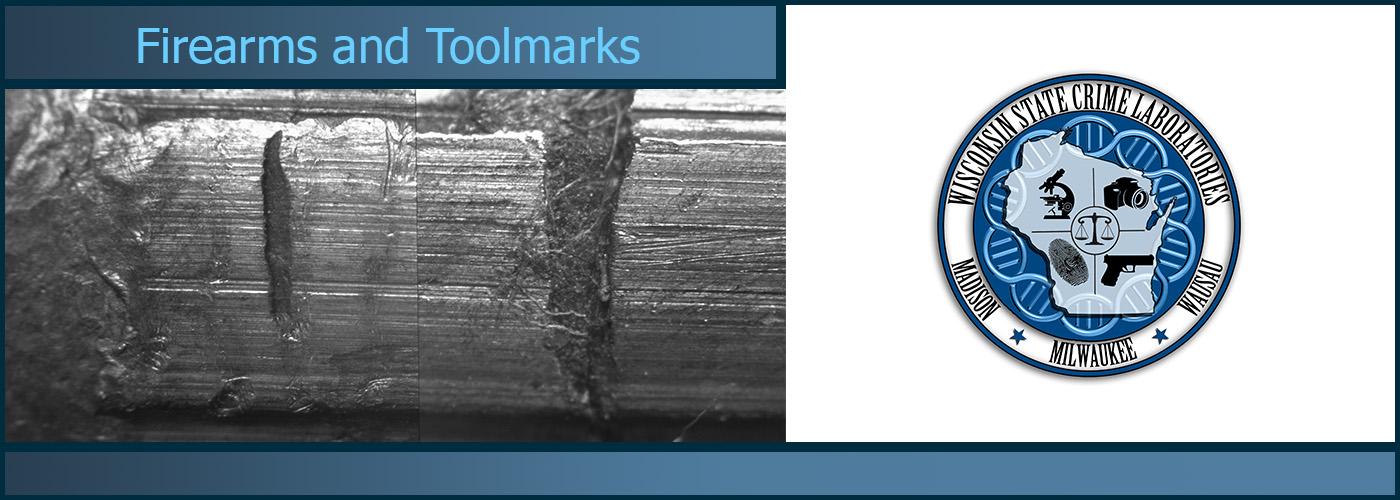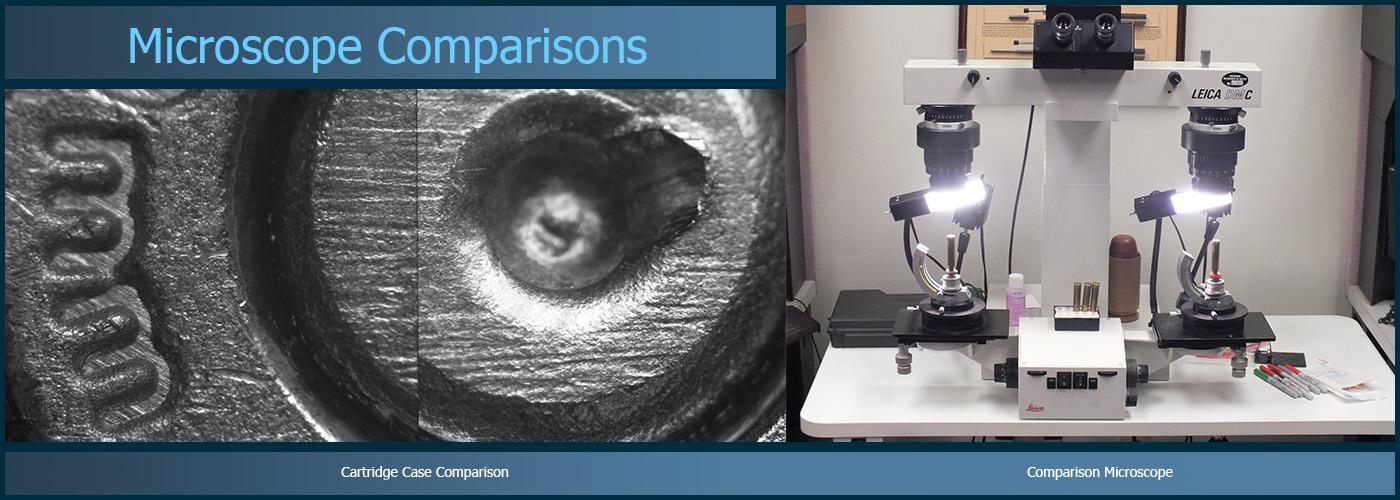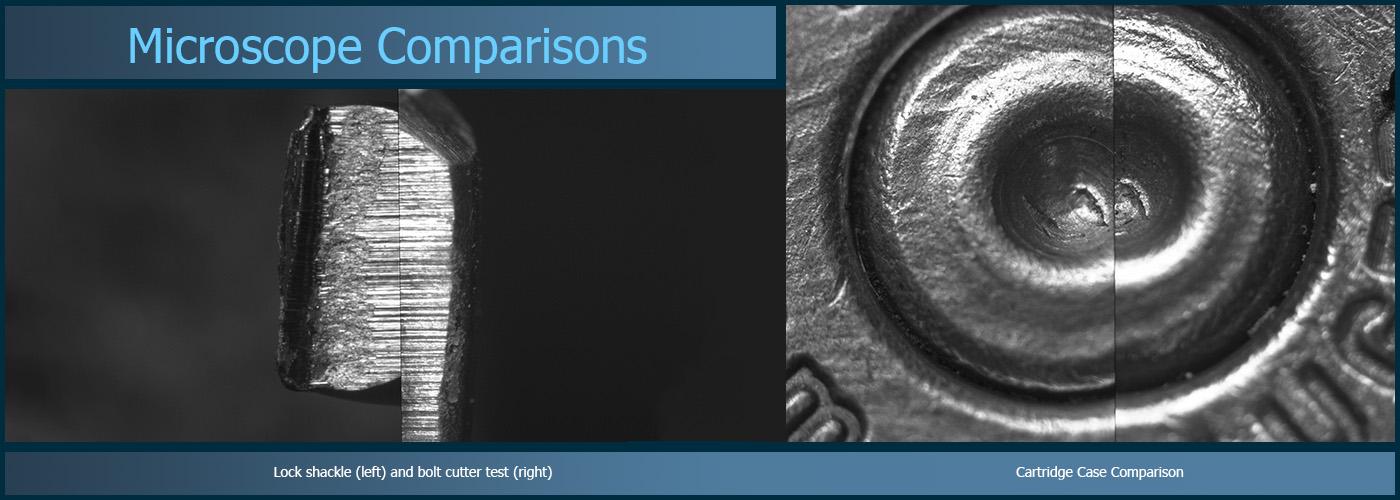Firearms and Toolmarks
The Firearms and Toolmarks Unit evaluates firearms for functionality through examination and test firing. The test fired bullets and cartridge cases from the firearm can be used for microscopic comparison with evidence items in an attempt to identify or exclude those items and having been fired from that specific firearm. The identifications are based on comparison of microscopic imperfections on the firearm that get impressed into fired ammunition components upon firing.
In the absence of a firearm, fired bullets, cartridges cases, and other fired ammunition components can be microscopically examined and compared to each other to establish if one or more firearms were the source(s) of those fired evidence items. In some circumstances, it may be possible to predict the manufacturer of the firearm that fired the evidence cartridge cases and/or bullets.
Upon request, the unit also can conduct distance determination estimates, the distance from firearm muzzle to target evidence item. This can be done through muzzle blast damage and gunpowder patterns or shotgun pellet patterns.
With gunpowder pattern interpretation, muzzle blast damage along with the presence or absence of gunpowder patterns surrounding the hole(s) in the item are examined to estimate range. Gunpowder patterns may be present at distances of 3 feet or less. Submission of the suspect firearm and ammunition is extremely beneficial as the firearm can be test fired with the same ammunition at known distances. These known distance tests assist the examiner in determining the distance estimate. It is recommended you contact the Firearms Unit with distance estimate requests prior to submission to assess the evidence suitability and limitations of the exam.
Tools and items with toolmarks on them can be submitted for examination and microscopic identification. The evidence tools are examined and tests for comparison acquired by using them on test materials. The tests are compared with the toolmarks on evidence items. Typical evidence items are bolt cutters, pry bars, screwdrivers, chisels, cut locks, door frames, safes, and others. Silicone casts of toolmarks may be submitted for comparison, but the actual item is always best. Toolmark cases are not accepted unless there is a tool available for comparison.
Services Provided
Firearms
- Test firing for microscopic comparisons of a known to an unknown
- Fired bullets, cartridge cases, and other fired components can be microscopically examined and compared to each other
- Barrel and overall length determination
- Trigger pull examinations
- Suppressor (silencer) devices
- Full-automatic conversion
- Hazardous mechanical alterations
- Home-made improvised firearm testing
- Distance determination
Toolmarks
- Tools and items with toolmarks are examined and compared using microscopic identification
- Silicone casts of toolmarks are compared to a tool or item
Serial Number Recovery
- Recover obliterated serial numbers stamped in metal surfaces such as; firearms, automobiles, motorcycles, etc.
- Restoration techniques include physical and chemical processing
Firearms and Ammunition for Destruction
The Laboratory is required by state statute to destroy firearms and ammunition for state law enforcement agencies. Firearms are destroyed using a gun shredder at the Milwaukee Laboratory. Firearms and ammunition surrendered for destruction can be delivered to any Laboratory; however, it is required that you complete a spreadsheet receipt of the firearms surrendered. No paperwork is needed for ammunition. We also ask you to contact laboratory prior to delivery. Air guns, B-B guns, fireworks, flares, knives, swords, and chemical agents will not be accepted.
Documents
Firearms and Toolmarks Submission Guidelines, Rev. 03/2024
Firearm Destruction Submission Form
Contact Information
For questions regarding the Firearms and Toolmarks Unit, refer to the contact information for the Milwaukee Laboratory.



